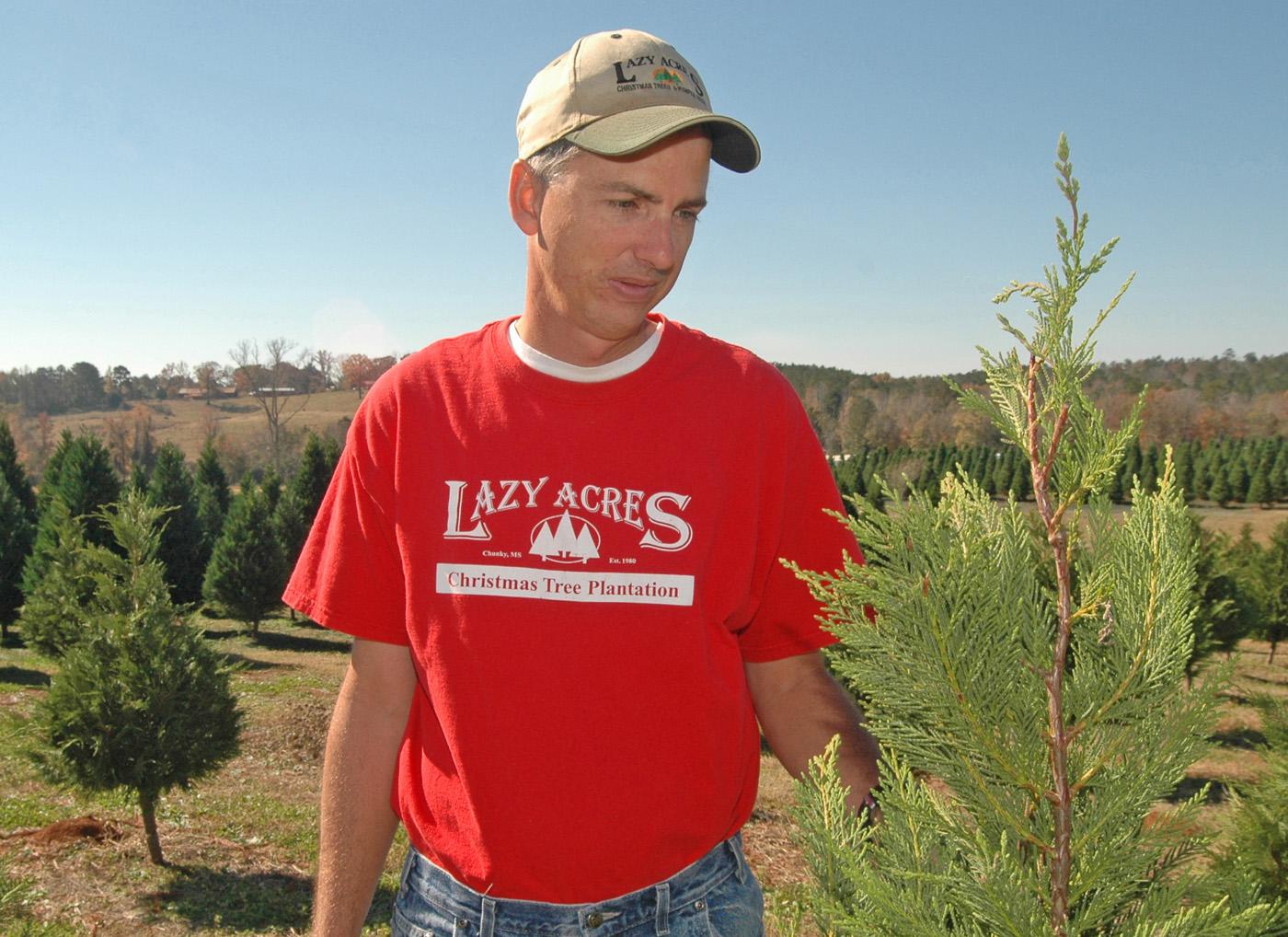Information Possibly Outdated
The information presented on this page was originally released on November 20, 2008. It may not be outdated, but please search our site for more current information. If you plan to quote or reference this information in a publication, please check with the Extension specialist or author before proceeding.
Christmas tree crop shapes up to market
By Patti Drapala
MSU Ag Communications
MISSISSIPPI STATE -- The 2008 Christmas tree crop in Mississippi is shaping up to be a good one as growers finish their spraying, shaking and shearing in time for holiday shoppers.
“Christmas tree farming is labor intensive,” said Steve Dicke, forestry specialist with the Mississippi State University Extension Service. “Because the trees are a high-value crop, the standard in producing them also is high.”
Most choose-and-cut farms open on Thanksgiving and stay busy until someone buys the last available tree. Mississippi farms will sell 50,000 trees in various sizes by Christmas Eve. Growers, who weathered minor drought over the summer but received adequate rain this fall, are ready. The timely rainfall encouraged growth and fill-out.
“More water available means much happier trees,” Dicke said.
Mississippi has 500 acres of commercial Christmas trees on 75 family-owned choose-and-cut operations throughout the state. Some farms are 5 acres or less in size, others average 5 acres or more and a few are larger than 10 acres. Most growers plant about 1,200 seedlings each year to replace trees that are from 4 years to 7 years of age and in their prime.
“Describing one's farm size merely by the numbers of acres can be misleading since a grower may plant at least 1,000 trees on an acre,” said Bill Brake, owner of K and B Christmas Tree Farm in Florence. “I have my trees in five little plots of 300, and I generally sell out of two plots a year.”
Consumers have several species to pick from when they visit a Christmas tree farm. The most popular is Leyland cypress, a species used as an ornamental in landscapes. Some prefer Virginia pine with its thick needles, and others favor Blue Ice, a tree with a subtle blue tint to its foliage.
Another blue-tinged species, Carolina Sapphire, is a choice for consumers who enjoy the tree's minty aroma. Eastern Redcedar, the original Mississippi Christmas tree of years ago, is still sold at some farms, but constant pest battles have caused many growers to stop growing this species.
“The toughest job the customer will have is picking out the tree,” said Michael May, owner of Lazy Acres Plantation in Chunky.
The farms usually charge by the foot for the tree, although its age, height and quality determine the final price. Growers may charge $5 a foot for a tree up to 8 feet tall and younger than 6 years in age. A tree that is taller than 10 feet in height and older than 6 years may cost $10 per foot.
“The more labor and production a person puts into growing a tree, the more he or she may have to charge per foot,” May said.
Growers put “tender, loving care” into their tree crop because their success is highly dependent upon the tree's looks. Customers favor a straight trunk, plush needles and conical shape. Trees that have these characteristics sell themselves.
Growers maintain a year-round spray program for insects and diseases. They also periodically shear, or trim, the trees to a traditional shape by the time the three-week marketing window arrives in December.
“My children call me a workaholic, but I really enjoy having people and their children come out to my farm and then seeing their excitement around Christmastime,” Brake said.
Consumers will not buy Christmas trees with pale or yellowing foliage. Trees prepare for the winter by redistributing chlorophyll throughout their systems. This process often makes needles susceptible to fading when ultraviolet light hits them.
Growers often apply a colorant to Christmas trees to protect foliage from UV rays. The colorant also makes the tree one of the safest Christmas decorations put up inside a home. The product acts as a sealant to slow water evaporation and retain freshness.
“Trees are used to a natural temperature of no higher than 50 degrees,” Dicke said. “When you take them inside to an environment of 78 degrees, they go into heat shock and try to cool themselves off by pumping water. Tree colorant keeps trees from drying out.”
Some consumers want to buy real Christmas trees and others do not. Growers hope to change a few minds with the trees they produce now.
“Some younger customers are trying a real tree because they never had one as a child,” Brake said. “New parents may want a real tree for their baby's first Christmas.”
A real tree may offer consumers a real bargain. An artificial tree with an average life span of five years costs from $150 to $200. A live tree from the farm that is 8 feet tall and lasts about a month costs about $36, May said.
“Manufacturers can duplicate a lot of things in artificial trees, but they can't duplicate the smell of a real Christmas tree,” he said.
Consumers can find Christmas tree growers in their area online at the Southern Christmas Tree Association Web site http://www.southernchristmastrees.org.



